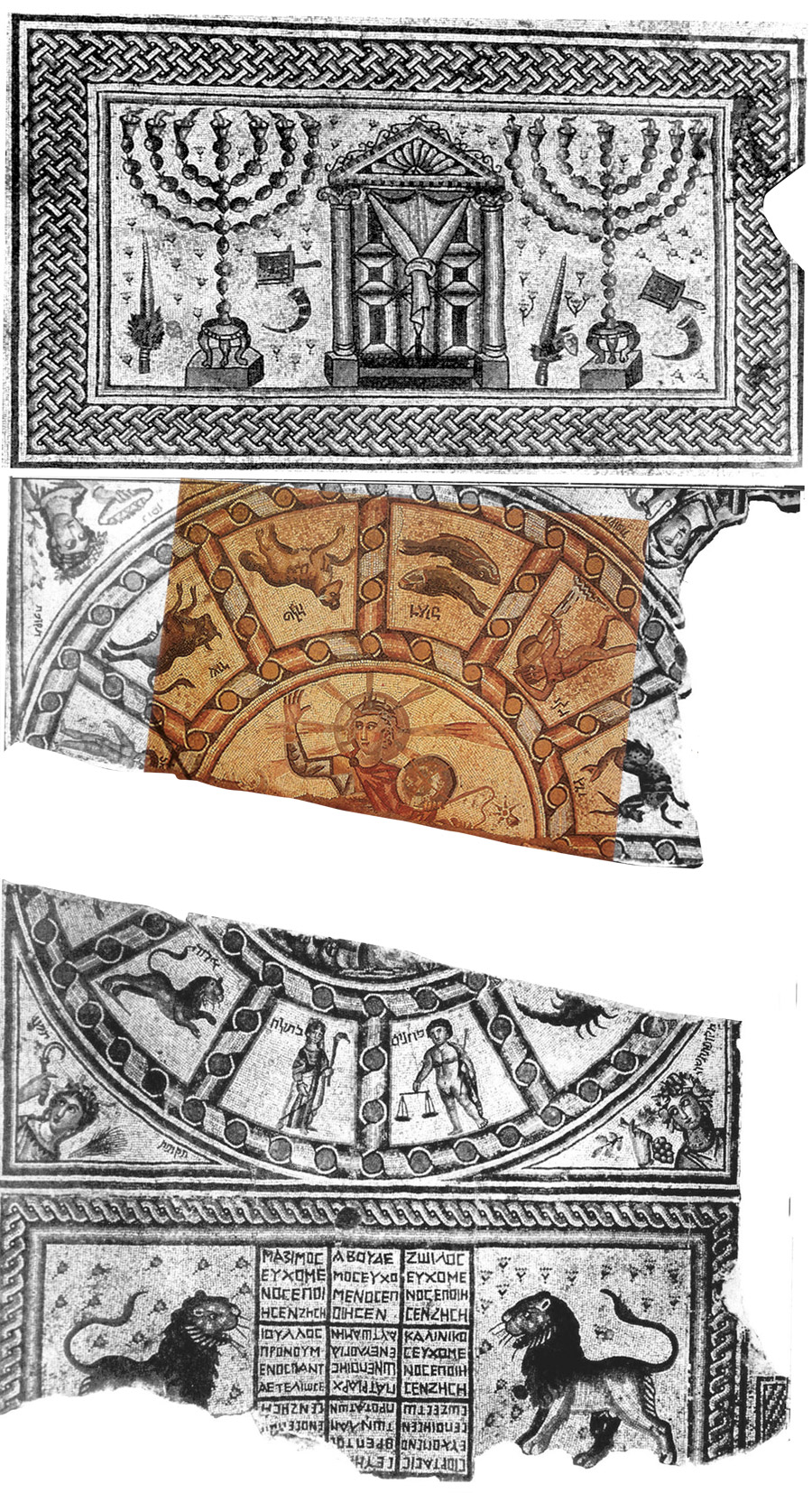The synagogue at Hammat Tiberias, located south of modern-day Tiberias, was discovered in 1961. The mosaic floor, dating to the last half of the fourth century C.E., is the earliest and one of the most impressive of such finds from Byzantine Palestine. The well-executed mosaic displays three panels. The first one, flanked by two lions and encountered upon entering the sanctuary, features eight Greek inscriptions listing the donors responsible for the founding/construction of the building. The main donor, whose inscription filled two squares in the panel, was Severus, who identified himself as being affiliated with the Patriarch, the leader of the Jewish community in the Roman Empire.
The second panel displays the signs of the zodiac, the four seasons, and an impressive representation of the sun god Helios in the guise of Sol Invictus (the unconquerable sun). The third panel, nearest the bima,displays a series of Jewish symbols, including the menorah, shofar, lulav, and ethrog.
The importance of this synagogue lies in the fact that it is the earliest known example of the widespread use of Greek and Greek names, the use of a blatant pagan motif in the center of the hall (which was to be copied in a number of other synagogues during the following centuries), and the use of Jewish symbols that were to become ubiquitous in the ancient synagogues of Palestine and the Diaspora.
